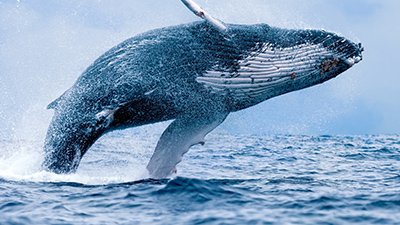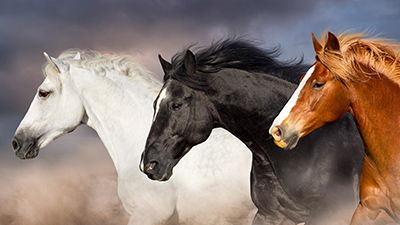
How Did Tigers Get Stripes and Leopards Get Spots?
Creationists often discuss how the species we see today descended from the original “created kinds.” But how did tigers end up with stripes while leopards got spots?
News Source
- LiveScience: “Study Reveals How Creatures Get Spots vs. Stripes”
Understanding the underlying genetic mechanisms behind human and animal characteristics is crucial for properly distinguishing the idea of molecules-to-man evolution from intelligent design. Evolutionists claim that what amounts to genetic accidents can create new information—which then allows a population of creatures to, over time, use a new organ (e.g., the eye) or exhibit a new behavior (e.g., division of labor within a population). Creationists point out that the genetic accidents we observe frequently lead to the disappearance of useful function or merely a “rescrambling” of traits.
In a new paper in the journal Nature, a team of scientists looked at the genetics behind one sort of characteristics: spots, and in particular, spots on fruit flies. The researchers studied morphogens, which are a specific type of protein instructing cells to make pigment. They traced a particular morphogen that is connected with a gene called “Wingless.” As fruit flies develop, the Wingless gene encodes for morphogen, which later in development causes cells to produce the correct pigment.
What is perhaps the most interesting discovery is that the Wingless gene has previously been linked with striped pigmentation, indicating that the same genetic mechanism can yield either spots or stripes depending on other factors. The team then experimented, manipulating the fruit fly genome to create stripes in flies that would have otherwise had spots.
“We can make custom flies,” joked University of Wisconsin–Madison molecular biologist Sean Carroll, lead author on the paper. He continued,
What’s happened is that connection between Wingless and pigmentation has been exploited to make much fancier and obvious patterns. Once there is a tool, in this case a little pathway, for making pigmentation, using that pathway in new places gives you new patterns. Just deploy the wingless molecule in the wing and get a fancier pattern.
Carroll describes the natural process of shifting patterns as “evolution,” but we must disagree. While alterations in the Wingless gene can change a fly’s pigmentation, it can’t make a fly into an entirely different organism, which is the common, publicized meaning of “evolution.” Rather, the research reveals a sort of “horizontal” process whereby the characteristics of a fly are rescrambled but the fly gains no new information or biological machinery. It seems likely that similar mechanisms are at work in big cats and many other created kinds, helping explain how many different species could have descended from the original created kinds.
Further Reading
- Are Mutations Part of the “Engine” of Evolution?
- 2.5 Mutations, Yes; Evolution, No
- Get Answers: Created Kinds (Baraminology), Genetics, Information Theory, Mutations, Speciation
For More Information: Get Answers
Remember, if you see a news story that might merit some attention, let us know about it! (Note: if the story originates from the Associated Press, FOX News, MSNBC, the New York Times, or another major national media outlet, we will most likely have already heard about it.) And thanks to all of our readers who have submitted great news tips to us. If you didn’t catch all the latest News to Know, why not take a look to see what you’ve missed?
(Please note that links will take you directly to the source. Answers in Genesis is not responsible for content on the websites to which we refer. For more information, please see our Privacy Policy.)
Recommended Resources

Answers in Genesis is an apologetics ministry, dedicated to helping Christians defend their faith and proclaim the good news of Jesus Christ.
- Customer Service 800.778.3390
- © 2024 Answers in Genesis





